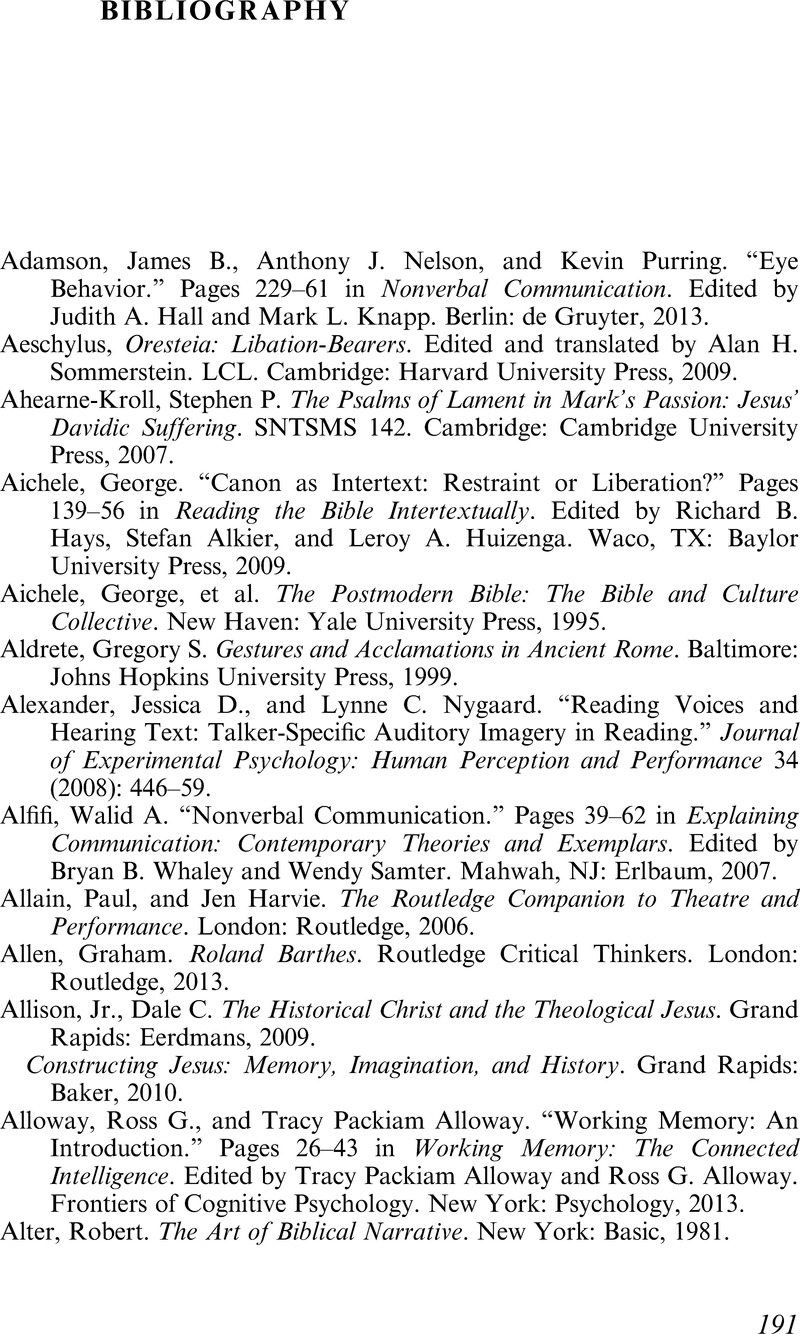Book contents
- Performing Early Christian Literature
- Performing Early Christian Literature
- Copyright page
- Dedication
- Contents
- Preface
- 1 Introduction
- 2 Foundations of Audience Experience
- 3 Aspects of Audience Engagement
- 4 Aspects of Audience Engagement
- 5 Aspects of Audience Engagement
- 6 Conclusion
- Bibliography
- Ancient Index
- Author Index
- References
Bibliography
Published online by Cambridge University Press: 24 September 2021
- Performing Early Christian Literature
- Performing Early Christian Literature
- Copyright page
- Dedication
- Contents
- Preface
- 1 Introduction
- 2 Foundations of Audience Experience
- 3 Aspects of Audience Engagement
- 4 Aspects of Audience Engagement
- 5 Aspects of Audience Engagement
- 6 Conclusion
- Bibliography
- Ancient Index
- Author Index
- References
Summary

- Type
- Chapter
- Information
- Performing Early Christian LiteratureAudience Experience and Interpretation of the Gospels, pp. 191 - 218Publisher: Cambridge University PressPrint publication year: 2021

